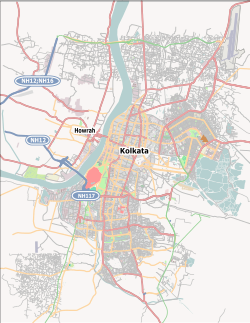GJ 1151
GJ 1151| 관측 데이터 신기루 J2000.0 이쿼녹스 J2000.0 | |
|---|---|
| 별자리 | 우르사 메이저 |
| 우측 상승 | 11h 50m 57.72145s[1] |
| 탈위임 | +48° 22′ 38.5625″[1] |
| 겉보기 크기 (V) | 14.008[2] |
| 특성. | |
| 스펙트럼형 | dM4.5[2] |
| B-V색지수 | 1.787[3] |
| 아스트로메트리 | |
| 방사 속도 (Rv) | -36.01±0.28km[4]/s |
| 고유 운동 (μ) | RA: -1545.069[1]mas/yr Dec.: -962.724[1]mas/yr |
| 시차 (π) | 124.3378 ± 0.0549[1] 마스 |
| 거리 | 26.23 ± 0.01 ly (8.043 ± 0.004 pc) |
| 절대치수 (MV) | 14.482±0.022[2] |
| 세부 사항 | |
| 미사 | 0.1540[3] M☉ |
| 반지름 | 0.1903[3] R☉ |
| 온도 | 3,143±26[2] K |
| 금속성 [Fe/H] | +0.04[2] 덱스 |
| 회전 속도 (v sin i) | 2.0km[4]/s |
| 나이 | 2.5[3] Gyr |
| 기타 지정 | |
| 데이터베이스 참조 | |
| 심바드 | 자료 |
GJ 1151은 태양으로부터 26.2광년 떨어진 거리에 있는 우르사 장조 북반구 별자리에 위치한 별이다. 적갈색 빛깔을 띠며, 겉으로 보이는 시각적 크기 14[2].0으로 육안으로는 보이지 않을 정도로 희미하다 항성은 -36 km/s의 방사상 속도로 더 가까이 이동하고 있으며,[4] 비교적 큰 적절한 움직임을 가지고 있어 1.815 km/yr의−1 속도로 천체를 가로지른다.[6]
이것은 스펙트럼 타입 dM4.5의 작은 적색 왜성이다.[2] 25억년[3] 전으로, 2.0km/s의 예상 회전 속도로 회전하고 있다.[4] 이 별은 태양 질량의 15.4%,[3] 태양 반지름의 [3]19.0%를 가지며 유효 온도는 3,143K이다.[2]
행성계?
2020년에 천문학자들은 항성이 지구 크기의 행성과 1-5일 길이의 궤도를 회전하면서 자석 상호작용을 하는 것과 일치하는 항성으로부터의 전파 방출의 발견을 발표했다.[7][8][9][10][11][12] 그러한 상호작용은 목성과 목성의 역할을 맡고 있는 GJ 1151과 행성의 Io 역할을 맡는 목성과 Io의 확장된 버전과 유사할 것이다. 이번 발견은 방사형 속도법을 이용해 2021년 2월 확인됐지만 [13]한 달 뒤 자료가 더 확보되자 반박했다.[14]
| 동반자 (별에서 순서대로) | 미사 | 세미마조르 축 (AU) | 궤도 주기 (일) | 편심성 | 기울기 | 반지름 |
|---|---|---|---|---|---|---|
| b (iii) | ≤1.2[14] M🜨 | 0.01735+0.00065 −0.00070 | 2.0183+0.0084 −0.0008 | — | — | 1.35+0.53 −0.29 R⊕ |
참고 항목
참조
- ^ a b c d e 이 소스에 대한 Brown, A. G. A.; et al. (Gaia collaboration) (2021). "Gaia Early Data Release 3: Summary of the contents and survey properties". Astronomy & Astrophysics. 649: A1. arXiv:2012.01533. Bibcode:2021A&A...649A...1G. doi:10.1051/0004-6361/202039657. S2CID 227254300.Gaia EDR3 레코드 VizieR.
- ^ a b c d e f g h Houdebine, Éric R.; et al. (August 2019). "The Mass-Activity Relationships in M and K Dwarfs. I. Stellar Parameters of Our Sample of M and K Dwarfs". The Astronomical Journal. 158 (2): 17. arXiv:1905.07921. Bibcode:2019AJ....158...56H. doi:10.3847/1538-3881/ab23fe. S2CID 159041104. 56.
- ^ a b c d e f g Mann, Andrew W.; et al. (May 2015). "How to Constrain Your M Dwarf: Measuring Effective Temperature, Bolometric Luminosity, Mass, and Radius". The Astrophysical Journal. 804 (1): 38. arXiv:1501.01635. Bibcode:2015ApJ...804...64M. doi:10.1088/0004-637X/804/1/64. S2CID 19269312. 64.
- ^ a b c d Jeffers, S. V.; et al. (June 2018). "CARMENES input catalogue of M dwarfs. III. Rotation and activity from high-resolution spectroscopic observations". Astronomy & Astrophysics. 614: 19. arXiv:1802.02102. Bibcode:2018A&A...614A..76J. doi:10.1051/0004-6361/201629599. S2CID 56147445. A76.
- ^ "G 122-49". SIMBAD. Centre de données astronomiques de Strasbourg. Retrieved 2020-03-02.
- ^ Lépine, Sébastien; Shara, Michael M. (March 2005). "A Catalog of Northern Stars with Annual Proper Motions Larger than 0.15" (LSPM-NORTH Catalog)". The Astronomical Journal. 129 (3): 1483–1522. arXiv:astro-ph/0412070. Bibcode:2005AJ....129.1483L. doi:10.1086/427854. S2CID 2603568.
- ^ Vedantham, H. K.; et al. (2020-02-17). "Coherent radio emission from a quiescent red dwarf indicative of star–planet interaction". Nature Astronomy. 4 (6): 577–583. arXiv:2002.08727. Bibcode:2020NatAs.tmp...34V. doi:10.1038/s41550-020-1011-9. hdl:1887/3133600. ISSN 2397-3366. S2CID 211204712.
- ^ a b Pope, Benjamin J. S.; et al. (17 February 2020). "No Massive Companion to the Coherent Radio-emitting M Dwarf GJ 1151". The Astrophysical Journal Letters. 890 (2): L19. arXiv:2002.07850. Bibcode:2020ApJ...890L..19P. doi:10.3847/2041-8213/ab5b99. S2CID 211171765. Retrieved 1 March 2020.
- ^ Starr, Michelle (29 February 2020). "For The First Time, Astronomers Have Detected an Exoplanet Using Radio Waves". ScienceAlert.com. Retrieved 1 March 2020.
- ^ "Radio telescope measures aurorae in distant planetary system". UPI. Retrieved 2020-02-26.
- ^ Redd, Nola Taylor (18 February 2020). "New Exoplanet Search Strategy Claims First Discovery". Quanta Magazine. Retrieved 2020-02-26.
- ^ Clark, Stuart. "An exoplanet is generating radio waves from its red dwarf sun". New Scientist. Retrieved 2020-02-26.
- ^ a b Mahadevan, Suvrath; Stefánsson, Gudmundur; Robertson, Paul; Terrien, Ryan C.; Ninan, Joe P.; Holcomb, Rae J.; Halverson, Samuel; Cochran, William D.; Kanodia, Shubham; Ramsey, Lawrence W.; Wolszczan, Alexander; Endl, Michael; Bender, Chad F.; Diddams, Scott A.; Fredrick, Connor; Hearty, Fred; Monson, Andrew; Metcalf, Andrew J.; Roy, Arpita; Schwab, Christian (2021), "The Habitable-zone Planet Finder Detects a Terrestrial-mass Planet Candidate Closely Orbiting Gliese 1151: The Likely Source of Coherent Low-frequency Radio Emission from an Inactive Star", The Astrophysical Journal Letters, 919 (1): L9, arXiv:2102.02233, Bibcode:2021ApJ...919L...9M, doi:10.3847/2041-8213/abe2b2, S2CID 231802021
- ^ a b Perger, M.; Ribas, I.; Anglada-Escudé, G.; Morales, J. C.; Amado, P. J.; Caballero, J. A.; Quirrenbach, A.; Reiners, A.; Béjar, V. J. S.; Dreizler, S.; Galadí-Enríquez, D.; Hatzes, A. P.; Henning, Th.; Jeffers, S. V.; Kaminski, A.; Kürster, M.; Lafarga, M.; Montes, D.; Pallé, E.; Rodríguez-López, C.; Schweitzer, A.; Zapatero Osorio, M. R.; Zechmeister, M. (2021), "The CARMENES search for exoplanets around M dwarfs", Astronomy & Astrophysics, 649: L12, arXiv:2103.10216, doi:10.1051/0004-6361/202140786, S2CID 126038821



